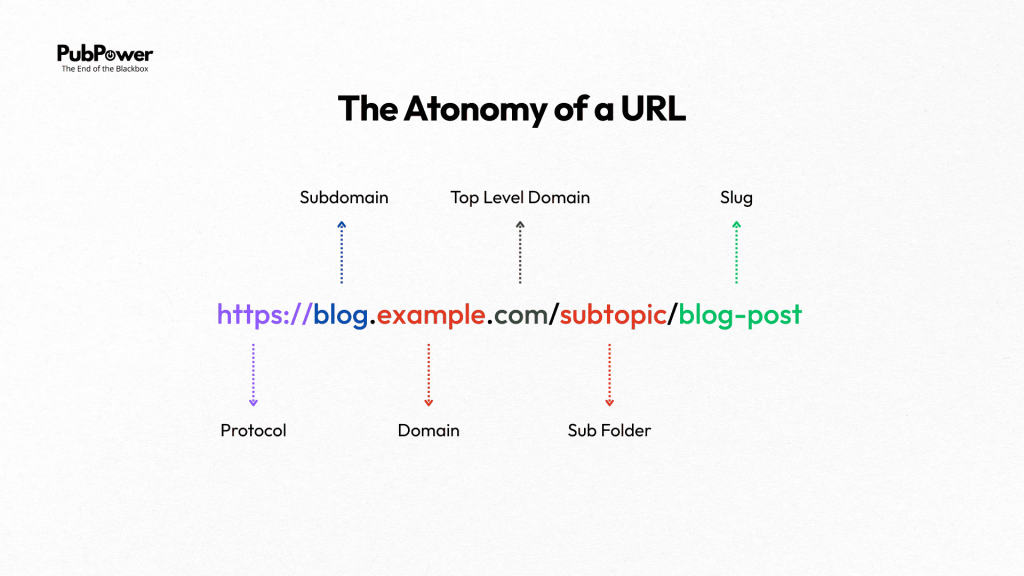The definition of an SEO optimized article has fundamentally changed. It is no longer about satisfying a rigid algorithm with keyword stuffing; it is about satisfying human curiosity while being clear enough for Artificial Intelligence (AI) to understand and cite you.
As highlighted in the Digital 2026 Global Report, user behaviors are evolving rapidly. Readers today expect immediate, accurate answers, and “Answer Engines” are becoming the new gatekeepers of traffic. If you are a publisher without a technical background, the good news is that modern SEO prioritizes clarity and value over complex code. This guide provides a direct, non-tech roadmap to crafting content that ranks and resonates in the age of AI.
Contents
- 1 What is an “SEO Optimized Article” in the AI Era?
- 2 The 10-Point Checklist for a Perfect SEO Optimized Article
- 2.1 1. Smart Keyword Strategy (Beyond the Basics)
- 2.2 2. Magnetic Headlines that Drive Clicks
- 2.3 3. Clean and Simple URLs
- 2.4 4. The “Click-Me” Meta Tags
- 2.5 5. Logical Structure (The Skeleton of Your Post)
- 2.6 6. High-Value Content & Information Gain
- 2.7 7. Visual Optimization & Technical Performance
- 2.8 8. Strategic Linking (The Spider Web Effect)
- 2.9 9. Lightning-Fast Loading (Core Web Vitals)
- 2.10 10. Mobile-First Experience
- 3 5 Simple Steps to Create Content That Ranks
- 4 Optimizing for Large Language Models (LLMs)
- 5 Conclusion
What is an “SEO Optimized Article” in the AI Era?
In 2026, an SEO optimized article isn’t just a block of text. It is a piece of content defined by three core pillars: it answers what the user is actually looking for (Search Intent), it is structured clearly enough for machines to read (AI-readability), and it demonstrates real expertise (E-E-A-T).
From “Keywords” to “User Intent”
Old SEO was about “strings” of text; new SEO is about “things” and concepts. Google’s algorithms have become incredibly sophisticated at understanding nuance. If someone searches for “best running shoes,” they don’t want a history of shoes or a definition of what a shoe is. They want a list, prices, comparisons, and reviews. An optimized article identifies the user’s problem and solves it immediately, without fluff.
The New Player: Writing for AI Readability and SGE
With the rise of Search Generative Experiences (SGE) and AI overviews, your content needs to be “machine-friendly.” This doesn’t mean writing like a robot. It means writing for a robot that is trying to summarize you. AI tools look for clear logic, short paragraphs, and distinct headings so they can easily extract your information and present it as an answer to users. If your content is a wall of text with no structure, the AI will likely skip it in favor of a competitor who used a bulleted list.
The Importance of E-E-A-T
Google prioritizes content that demonstrates E-E-A-T: Experience, Expertise, Authoritativeness, and Trustworthiness.
- Experience: Do you have first-hand experience with the topic?
- Expertise: Are you knowledgeable in this field?
- Authoritativeness: Is your site a go-to source for this topic?
- Trustworthiness: Is your content accurate and your site secure? For non-tech publishers, this means you can’t just rehash what everyone else is saying. You need to add your unique perspective or data.
The 10-Point Checklist for a Perfect SEO Optimized Article
Before you hit publish, run your draft through this detailed non-tech checklist to ensure it meets modern standards.
1. Smart Keyword Strategy (Beyond the Basics)
Don’t just pick one word. Your strategy should be a ecosystem of terms:

- Primary Keywords: The main topic (e.g., “SEO tips”). This appears in your title and introduction.
- Secondary Keywords: Related terms that add context (e.g., “digital marketing,” “content strategy”).
- Semantic Keywords: Words logically related to your topic that help AI understand the context (e.g., “algorithm,” “ranking,” “traffic,” “SERP”). Using these helps Google understand that you are covering the topic comprehensively.
2. Magnetic Headlines that Drive Clicks
Your title is your first impression. If your headline is boring, it doesn’t matter how good the article is—no one will read it.
- Length: Keep it under 60 characters so it doesn’t get cut off in search results.
- Promise: It must contain your main keyword and promise a clear benefit (e.g., “How to…” or “10 Ways to…”).
- Emotion: Use power words like “Essential,” “Ultimate,” or “Simple” to increase your Click-Through Rate (CTR).
3. Clean and Simple URLs
Your web address (URL) is a ranking factor. Keep it short, readable, and free of junk.

- Bad: pubpower.io/category/2026/post?id=12345
- Good: pubpower.io/blog/seo-optimized-article-guide
A clear URL tells both the user and the search engine exactly what to expect on the page.
4. The “Click-Me” Meta Tags
The Meta Title and Meta Description are what users see on the Google results page—think of this as your “shop window.”
- Meta Title: The blue link text. Make it punchy.
- Meta Description: The gray text below. Treat this (approx. 150-160 characters) like a mini-ad. Summarize the article’s value proposition and include a call to action or a hook to entice the user to click.
5. Logical Structure (The Skeleton of Your Post)
You must use Heading tags (H1, H2, H3) to organize your thoughts.
- H1: Your main title (only use one per page).
- H2: The main chapters or major points.
- H3: Sub-sections that support the H2s. This hierarchy helps busy readers skim your content (which improves engagement metrics) and helps AI understand the hierarchy of importance in your content.
6. High-Value Content & Information Gain
Your content must provide “Information Gain”—it must add something new to the conversation.
- Informational: Teaches something new (Guides, How-tos).
- Transactional: Helps the user buy or sign up. This is particularly crucial when planning your holiday revenue strategy or other seasonal campaigns where the goal is to convert readers into revenue immediately.
- Engaging: Tells a story or entertains. Avoid “fluff” (sentences that add no value). Every sentence should drive the reader forward.
7. Visual Optimization & Technical Performance
Walls of text are boring and lead to high “bounce rates” (people leaving immediately). Use images, infographics, and videos to break up content. However, images are often the biggest cause of slow websites.
To fix this, you should use lazy loading. This technique ensures that images only load when the reader scrolls down to them, rather than loading everything at once. This keeps your initial page load speed lightning fast, which Google loves.
8. Strategic Linking (The Spider Web Effect)
Links are the roads that connect the internet.
- Internal Links: Link to other relevant posts on your site. This keeps readers on your domain longer and helps Google crawl your site.
- External Links: Link to reputable sources (like major news sites, research papers, or official definitions) to show Google you’ve done your research and are citing credible sources.
9. Lightning-Fast Loading (Core Web Vitals)
You don’t need to be a coder to know that slow sites lose readers. If your site takes more than 3 seconds to load, you’ve likely lost 40% of your audience. Apart from lazy loading images, ensure you aren’t using too many heavy plugins and that your hosting provider is reliable.
10. Mobile-First Experience
Google now indexes the mobile version of your site first. If your article looks great on a desktop but is unreadable on an iPhone, you will not rank. Ensure your text is large enough (at least 16px), paragraphs are short, and buttons are easy to tap with a thumb.
5 Simple Steps to Create Content That Ranks
Step 1: Read Minds (Search Intent Research)
Before you type a single word, search your topic on Google. Look at the top 3 results.
- Are they long guides?
- Are they top-10 lists?
- Are they videos?
- Are they product pages? Your goal is to create content that matches what Google is already rewarding. If the top results are all “How-to Guides,” don’t write a “History of…” opinion piece.
Step 2: Build the Skeleton (Optimizing Structure)
Draft your outline first. Plan your H2s and H3s before writing paragraphs. This prevents “writer’s block” and ensures your argument flows logically. A good structure ensures that you cover the topic comprehensively, which reduces the chance that a user will hit “back” to find a better answer elsewhere.
Step 3: Speak the Language (Natural Keyword Insertion)
Write for humans first. Don’t stress about keywords in your first draft. Once the draft is written, go back and ensure your primary keyword appears in:
- The H1 Title.
- The first 100 words of the intro.
- Naturally throughout the headers. If a sentence sounds robotic because you forced a keyword in, rewrite it. Readability is more important than keyword frequency.
Step 4: Connect the Dots (Linking Strategy)
Once the draft is written, identify 2-3 opportunities to link to your own previous articles. This builds a “Topic Cluster,” showing Google you are an expert on this subject. Also, find 1-2 external statistics or quotes to link out to, which adds credibility to your arguments.
Step 5: Polish and Monitor
Check for spelling and grammar errors—Google hates sloppy content. After publishing, use tools like Google Search Console to see if your traffic is growing. If a page isn’t performing, don’t be afraid to go back and update it with new information or better headings.
Optimizing for Large Language Models (LLMs)
To ensure your SEO optimized article is picked up by AI tools like ChatGPT, Google Gemini, or Claude, you must focus on clarity and structure. As we see in the 5 must-know AI SEO trends in 2026, the ability to answer specific queries directly is becoming the most valuable asset a publisher can have.

Why Clarity is King in the Age of AI
LLMs work by predicting the next likely word in a sentence based on patterns. If your writing is convoluted, full of jargon, or uses complex sentence structures, AI struggles to process and summarize it accurately.
- Keep sentences short: Aim for under 20 words per sentence.
- Keep paragraphs short: No more than 3-4 sentences per paragraph.
Structuring for “Answer Engines”
To get featured in AI overviews, format your content as direct answers.
- Use Q&A Formats: AI users often ask questions. Phrasing your H2s as questions (e.g., “How do I optimize for SEO?”) makes it easier for AI to pull your content as a direct answer.
- Stick to Facts: Clear data points, numbered lists, and bullet points are “candy” for AI processors. They can easily extract a list of “10 tips” and present it to the user, citing you as the source.
Conclusion
Creating an SEO optimized article for 2026 doesn’t require a degree in computer science or expensive software. It requires a shift in mindset: from chasing algorithms to serving users. By focusing on high-quality content, logical structure, and a seamless user experience, you satisfy both the human reader and the AI bots.
The key is consistency. Follow this 10-point checklist for every article you publish. Over time, you will build a library of authoritative content that drives sustainable traffic. Start small—pick one old article on your site today and update it using these steps.
>>>Resource:
For the official rules on quality rankings, read Google’s Guide to Creating Helpful Content.
Confused by the jargon? Check out Ahrefs’ Guide to Technical SEO or browse the SEMrush SEO Glossary.
Ready to transform your content strategy and maximize your ad revenue? Contact PubPower today for a free consultation on how we can help you monetize your content.



